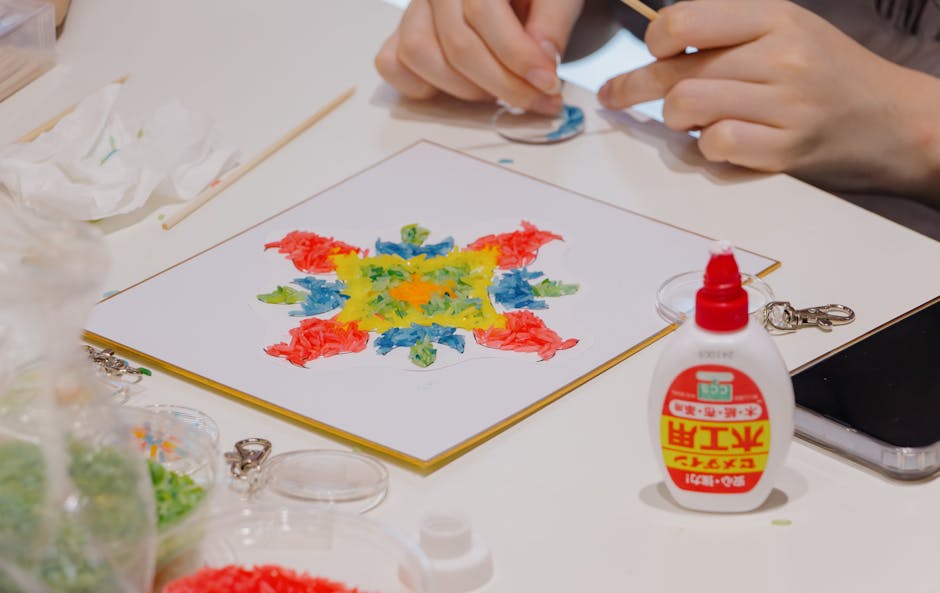
In the vibrant tapestry of Japanese culture, traditional crafts stand as enduring testaments to artistry, history, and meticulous skill. Yet, for these precious legacies to thrive in our rapidly changing world, innovation and adaptation are key. We are thrilled to share an inspiring initiative that beautifully marries ancient artistry with modern sustainability: the "Upcycled Mizuhiki" workshop, a collaborative effort by 特定非営利活動法人インクルーシヴ・ジャパン (Specified Non-profit Organization Inclusive Japan) and 東京水引 (Tokyo Mizuhiki).
The Enduring Elegance of Mizuhiki
Mizuhiki, the art of decorative paper cord tying, is far more than just a craft; it's a profound cultural expression woven into the fabric of Japanese tradition. Dating back over a thousand years, these intricately braided and knotted cords are used to adorn gifts, envelopes, and ceremonial objects, symbolizing connection, warmth, and good fortune. Each knot and loop carries deep meaning, from wishes of prosperity to expressions of gratitude.
The creation of Mizuhiki demands exceptional skill and patience. Artisans meticulously twist strands of washi paper, often reinforced with silk or other materials, and then color them with vibrant dyes. The resulting cords are then expertly manipulated into intricate designs, showcasing a mastery of form and precision that is truly breathtaking. 東京水引 (Tokyo Mizuhiki) represents a lineage of these dedicated artisans, preserving and evolving this delicate art form with a commitment to both tradition and excellence.
A Sustainable Thread: Upcycled Materials
What makes this particular initiative so compelling is its embrace of アップサイクル素材 (upcycled materials). Upcycling transforms discarded items into new products of higher quality or environmental value, giving them a second life and reducing waste. Integrating upcycled materials into a traditional craft like Mizuhiki is a visionary step, demonstrating a profound commitment not only to artistic heritage but also to environmental stewardship.
This approach breathes a 新たな息吹 (new breath) into the craft, challenging conventional notions of what constitutes "precious" material. It invites artisans and participants to see potential in the overlooked, fostering creativity while promoting a more sustainable lifestyle. Imagine the stories embedded within each upcycled strand, now reborn into a beautiful, meaningful Mizuhiki piece.
The "Upcycled Mizuhiki" Workshop: A Fusion of Purpose and Art
The collaboration between 特定非営利活動法人インクルーシヴ・ジャパン (Specified Non-profit Organization Inclusive Japan) and 東京水引 (Tokyo Mizuhiki) culminates in the "Upcycled Mizuhiki" workshop. This event is not merely a craft class; it's a powerful statement about community, sustainability, and the enduring power of 伝統工芸 (traditional craft).
特定非営利活動法人インクルーシヴ・ジャパン, known for its dedication to fostering an inclusive society, recognizes the unique ability of traditional crafts to connect people, preserve cultural identity, and offer pathways for skill development. By partnering with 東京水引, they create an accessible platform for individuals to engage with a cherished art form while actively contributing to environmental consciousness.
Participants in the 「アップサイクル水引」ワークショップ ("Upcycled Mizuhiki" workshop) are not just learning to tie knots; they are engaging in a dialogue between past and future. They are experiencing firsthand the artisan's commitment to materials – not just in their quality, but in their origin and impact. This workshop beautifully illustrates how traditional skills can be adapted to address contemporary challenges, making crafts relevant and vital for modern life.
Crafting a Sustainable Future
This innovative workshop serves as a brilliant example of how traditional crafts can find new purpose and resonate with a modern audience. By integrating アップサイクル素材, Mizuhiki transcends its ceremonial origins to become a symbol of sustainability and conscious living. It shows that preserving heritage doesn't mean standing still; it means evolving thoughtfully, embracing new ideas while honoring the essence of the craft.
The "Upcycled Mizuhiki" workshop is more than an event; it's a movement towards a future where art, tradition, and environmental responsibility intertwine seamlessly. It encourages us all to look at discarded items with new eyes and to appreciate the profound skill and dedication that can transform them into objects of beauty and meaning. It truly breathes 新たな息吹 into the heart of traditional Japanese artistry.
Comments
Post a Comment